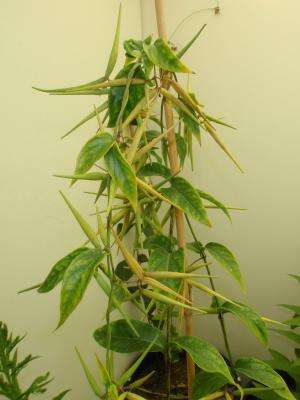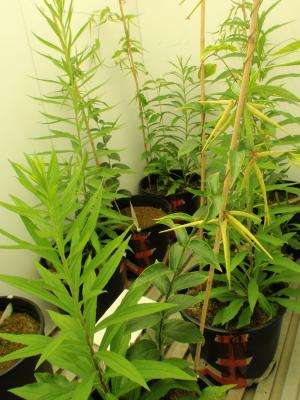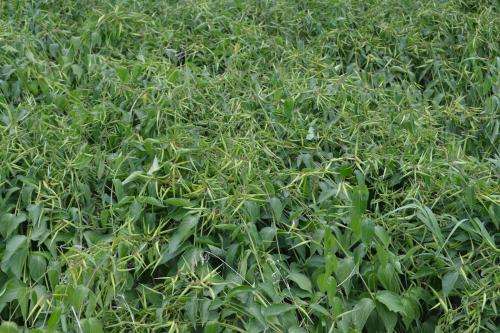A European invader outcompetes Canadian plants even outside its usual temperature range

Dog-strangling vine (Vincetoxicum rossicum) is an exotic plant originating from the Ukraine and southeastern Russia that is becoming increasingly invasive in southern Ontario, Canada. It has been found growing successfully in both disturbed and undisturbed areas, in open fields, forest edges and understories, parks, road edges and railway embankments. The invasive plant effectively competes for light by forming large and dense stands that climb over other plants. A study published in the open access, peer-reviewed journal NeoBiota explores the effects of V. rossicum invasion in Canada.
Apart from displacing local plant species, among the ecological effects of a possible V. rossicum invasion are endangered populations of local soil organisms and pollinator species. Another concern is the dog strangling vine's good adaptability to and possible invasion of the alvar environment in the region, which for the Ontario is a rare kind of habitat supporting a number of important habitat-specific species. V. rossicum is also believed to be allelopathic, which means that in its roots, it produces chemicals that are toxic to other plants and exuded in the surrounding soil.

Along with photoperiod and moisture, temperature is considered a key environmental cue for flowering. Temperature majorly affects the reproduction of the dog-strangling vine. Generally, reproduction takes longer to occur under cooler growing conditions. A slight reduction from the current growing temperature conditions of the dog-strangling vine is sufficient to produce a significant delay in budding, flowering, and the formation of seedpods. Therefore, V. rossicum may be limited in its capacity to spread into northern climates simply because it may not be able to complete its life-cycle. To test this possibility the authors grew V. rossicum under simulated temperature conditions of northern and southern Ontario. In addition, they forced V. rossicum to compete with Solidago canadensis, which is highly abundant across Ontario.
Laura Sanderson and Pedro Antunes from the Invasive Species Research Institute, Canada, found that "in spite of a delay in growth under cooler conditions, V. rossicum produced just as many seeds as it did under temperature regimes typical of its current distribution range". They also found that competition with S. canadensis resulted in reductions in the fitness and total biomass of V. rossicum. However, the relative reductions in total biomass were greater for the competing native species, regardless of climatic temperature regime.

"Phenotypic plasticity may enable V. rossicum to spread into northern Ontario", conclude the authors.
More information: Laura A. Sanderson, Pedro M. Antunes (2013) The exotic invasive plant Vincetoxicum rossicum is a strong competitor even outside its current realized climatic temperature range. NeoBiota 16: 1, doi: 10.3897/neobiota.16.4012
Journal information: NeoBiota
Provided by Pensoft Publishers

















